

[HOME]
[WEB ALBUMS]
[PROJECTS]
[ARCHIVE]
[DOWNLOADS]
[LINKS]
PROJECTS
Project MK27: Capturing water masers on 22G Hz with the São Gião Radio Telescope
Introduction.
Part of this text was used for the ARRL antenna book.
See also Astrophysical masers; https://en.wikipedia.org/wiki/Astrophysical_maser.
When first discovered, they were called mysterium signals.
Soon a large number of different molecules showed also maser capability .http://www.astrosurf.com/luxorion/radioastronomy-lines.htm.
By studying the presence and movement of molecule clouds one can monitor the birth and the dying of stars, interesting, because this cannot be done with optical telescopes. https://science.howstuffworks.com/star6.htm
Maser sources can be very variable; explaining the varying amplitudes and frequency shifts is difficult.
Large radio telescopes often have no time to track all these changes. That is why amateur stations can help.
We concentrate on the signal capturing of H2O (water) on 22GHz.
No special receivers were built; only standard (modified) receivers were used.
Receiver.
The water molecule emits on several freqencies; the lowest being 22.235078900 GHz.
Again very convenient is that the Norsat 9000LDF LNB comes close in range.Still the output frequency is 1 985 080 000Hz. This is above the standard SDR dongle upper limit of 1.7GHz.
We can adjust that by turning the frequency adjust screw CW and totally down. Now the LO will become 21 210 130 000Hz.
This brings the output frequency down to 1.021 GHz. see figure 1.
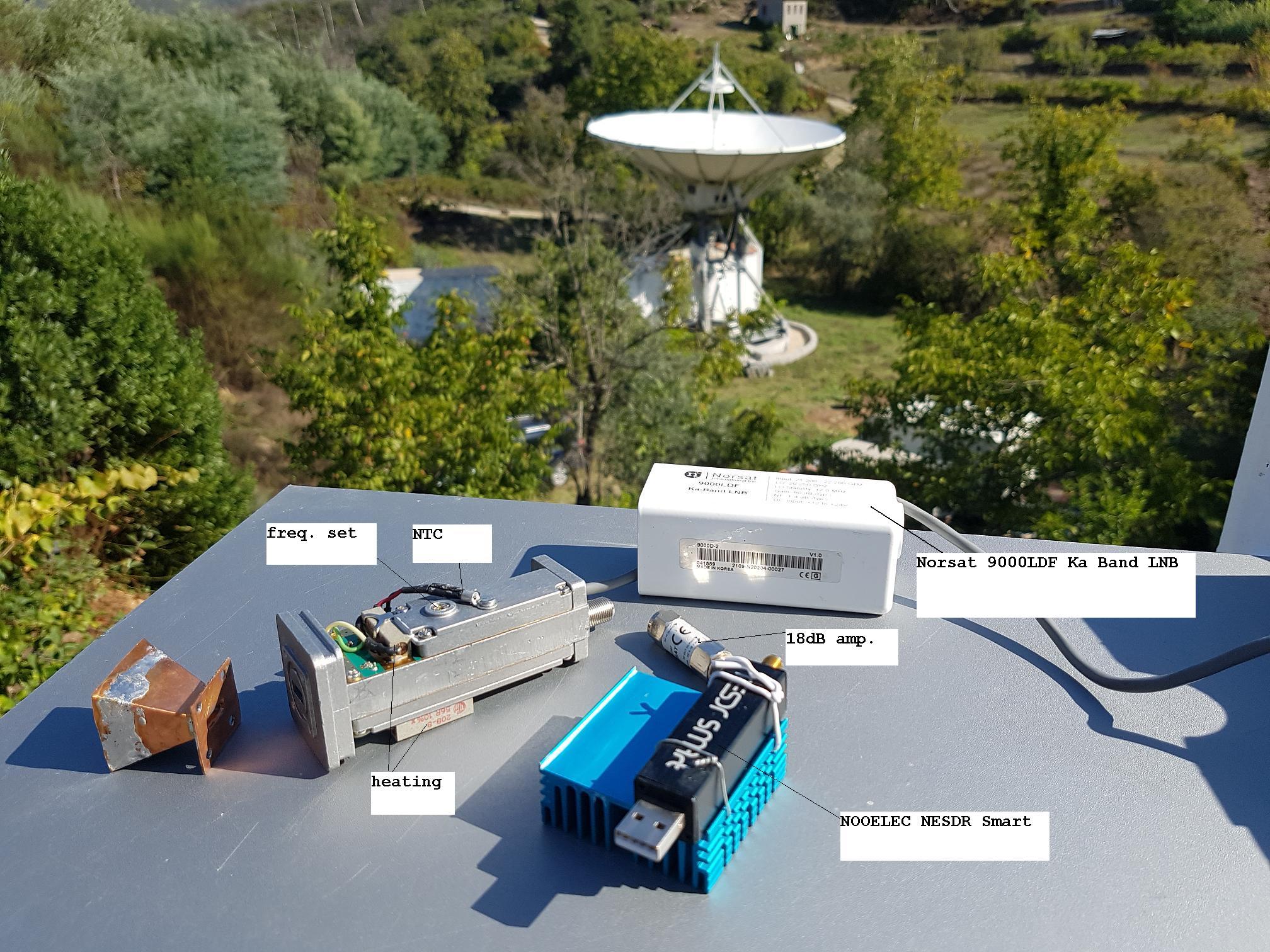
Fig1. Receiver chain components
Still this is a DRO controlled LO, so it drifts. So, stable measurement can only be done when the ambient temperature is constant. A reasonable solution is to add a linear (0 to 12W) self regulating PID thermostat.
For the design of the horn, see the description 'A Horn Antenna for 10GHz' was used from the 19th edition, chapter 18 of the ARRL antenna book. The prototype horns were made from copper foil. The fan flare version of figure 7 adapts better to a round waveguide.
Measuring preparations.
Trying to set the radio exactly on a maser frequency is not useful. The frequency from the object has shifted because of the Doppler effect.
There are two main movements causing the Doppler shift. The first is the motion of the object itself; it can be moving toward us (resulting in a higher frequency) or it moves away from our solar system (giving a lower frequency). This can be caused by the fact that the source is situated in a different arm of the milky way.
The second movement is our own movement; that is the day/night rotation or the earth, the movement of the earth around the sun and the movement of the sun in our surroundings. All these movements have to be calculated and will give a correction on the frequency of the signal we can expect to receive.
The source velocity can be found as a fixed value belonging to that source, see https://maserdb.net/. Search the source name like W3(H2O), W49, Cep A, W51, etc.
The second velocity; our movement, can be calculated online like here; https://www.gb.nrao.edu/~fghigo/gbt/setups/radvelcalc.html
Next the two velocities have to be added = vtot [km/s].
Your sky frequency [Hz]= maser rest frequency*(1-vtot*1000/c). where c=3e8.
Or use
http://f4klo.ampr.org/vlsrKLO.php
Or download the vlsr.exe tool from parac.eu. Fill in, or modify the config file and run the exe. Results for your observatory are given in the vobs_result.txt file.
In case of the 22GHz maser, setting the frequency of the DRO LNB is not accurate, so generation of a pilot tone can help. Set the GPS controlled frequency generator to a sky frequency division value it can handle. Add two inline amplifiers and in our case connect 10m of coax and place the other end in the beam of the antenna. Tune the SDR radio to find the pilot tone. Switch off the pilot tone and start measuring.
Capturing and post processing Software.
In general; radio astronomy signals are very weak. The way to improve the S/N ratio is not use running averages but to stack the signals.
The capture and FFT conversion software Cfrad2.exe does that.
In 5 minutes 100000 spectra are Fast Fourier Transformed, added and the end result is written to disk.
Often it is needed to add also the end results together; this can be done in excel or a Python script.
On the http://parac.eu/projects.htm page there are multiple free examples and downloads.
Pointing/Tracking.
The Sao Giao radio telescope has a 9.3m solid surface dish, mounted together with a 6m sea container on a rotating platform.
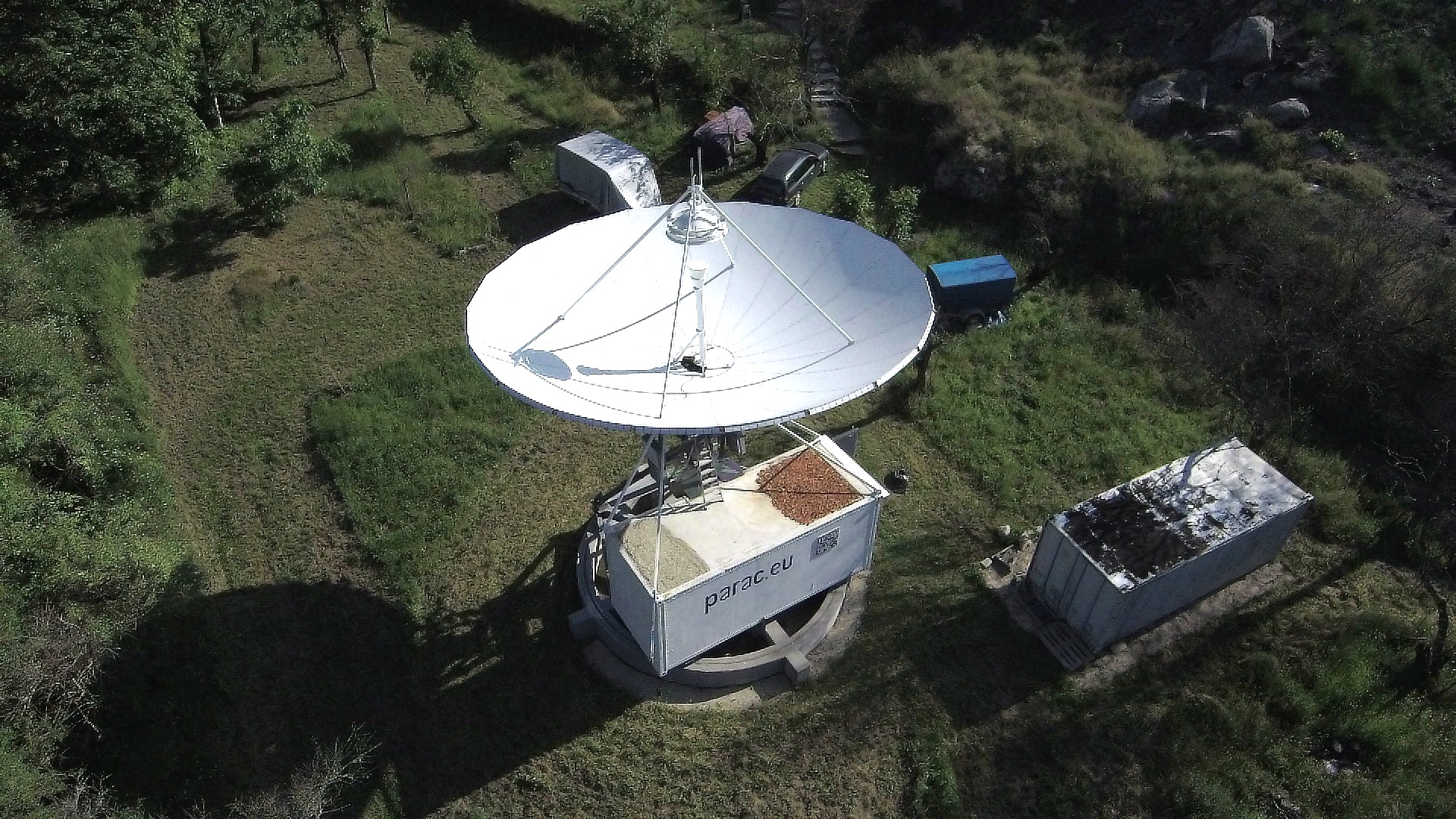
Sao Giao Radio Telescope
see also the Wiki page
here
facebook page
here
For accurate azimuth pointing, a 16bit resolver is used. For elevation an absolute 16bit solid state resolver is mounted; communication via Modbus.
Two 3 phase motors (1KW for elevation and 0.4KW for azimuth) are driven by frequency inverters and controlled by a python script.
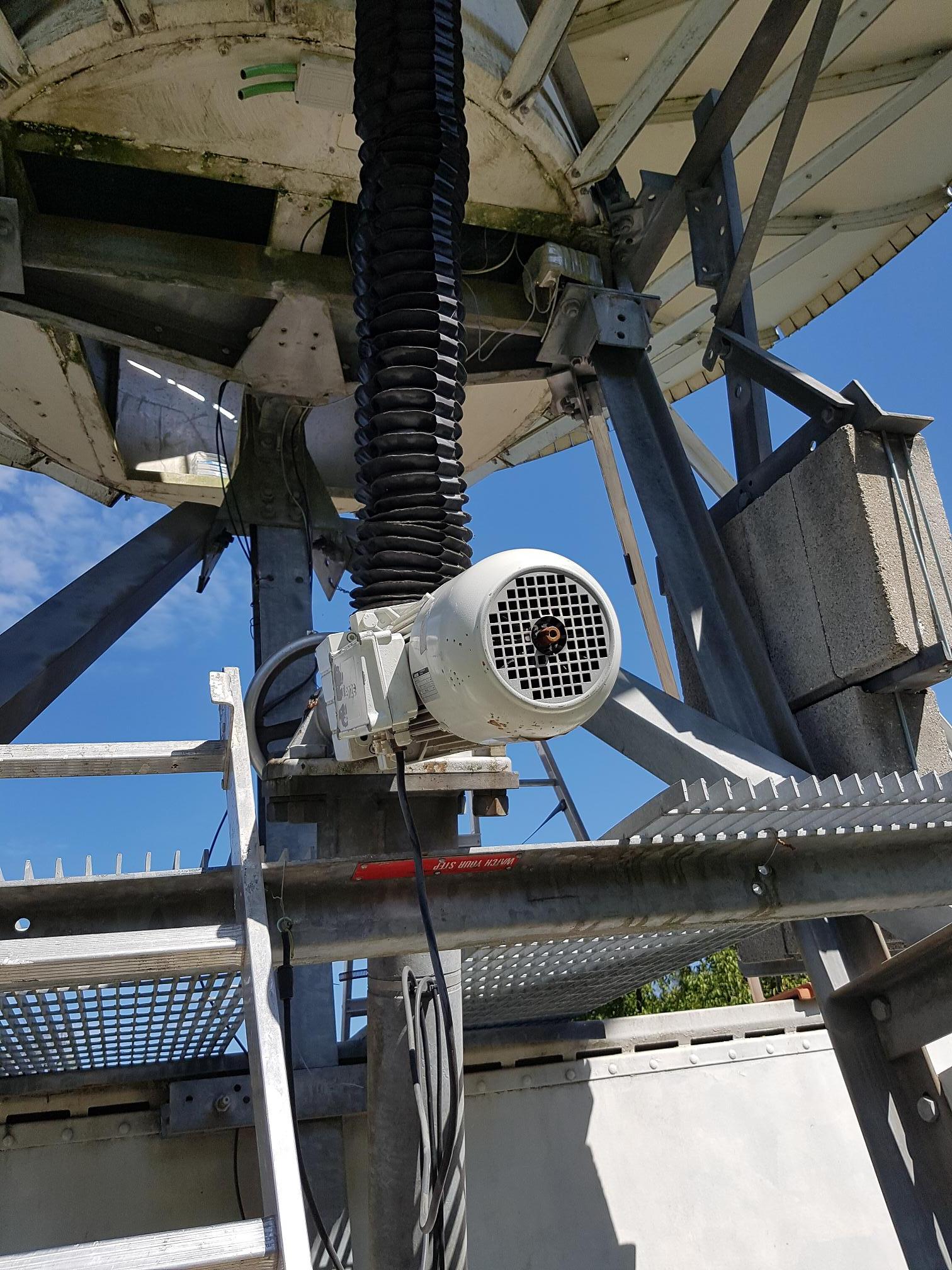
Sao Giao Radio Telescope elevation 1kW motor
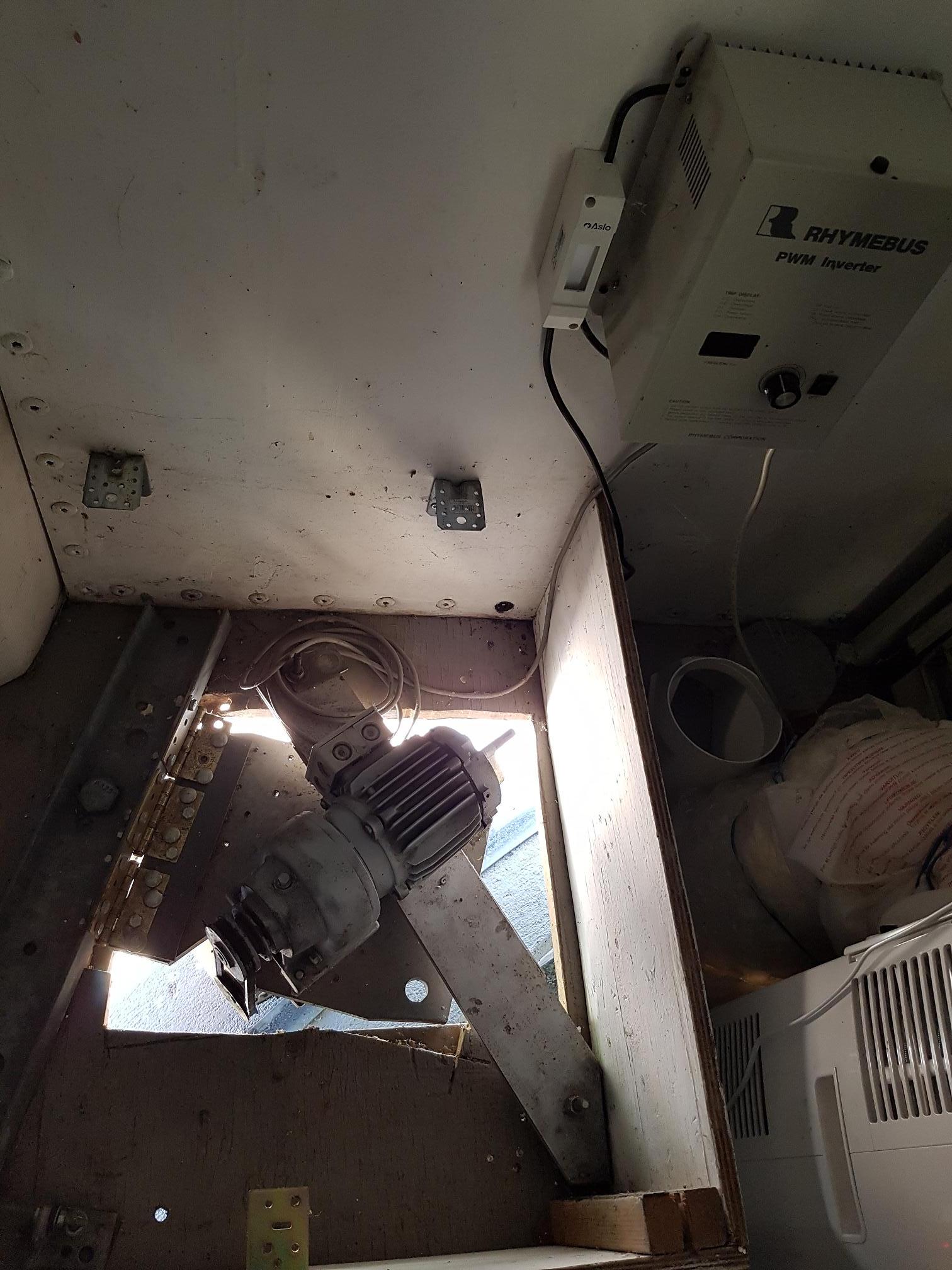
Sao Giao Radio Telescope 0.4kW motor
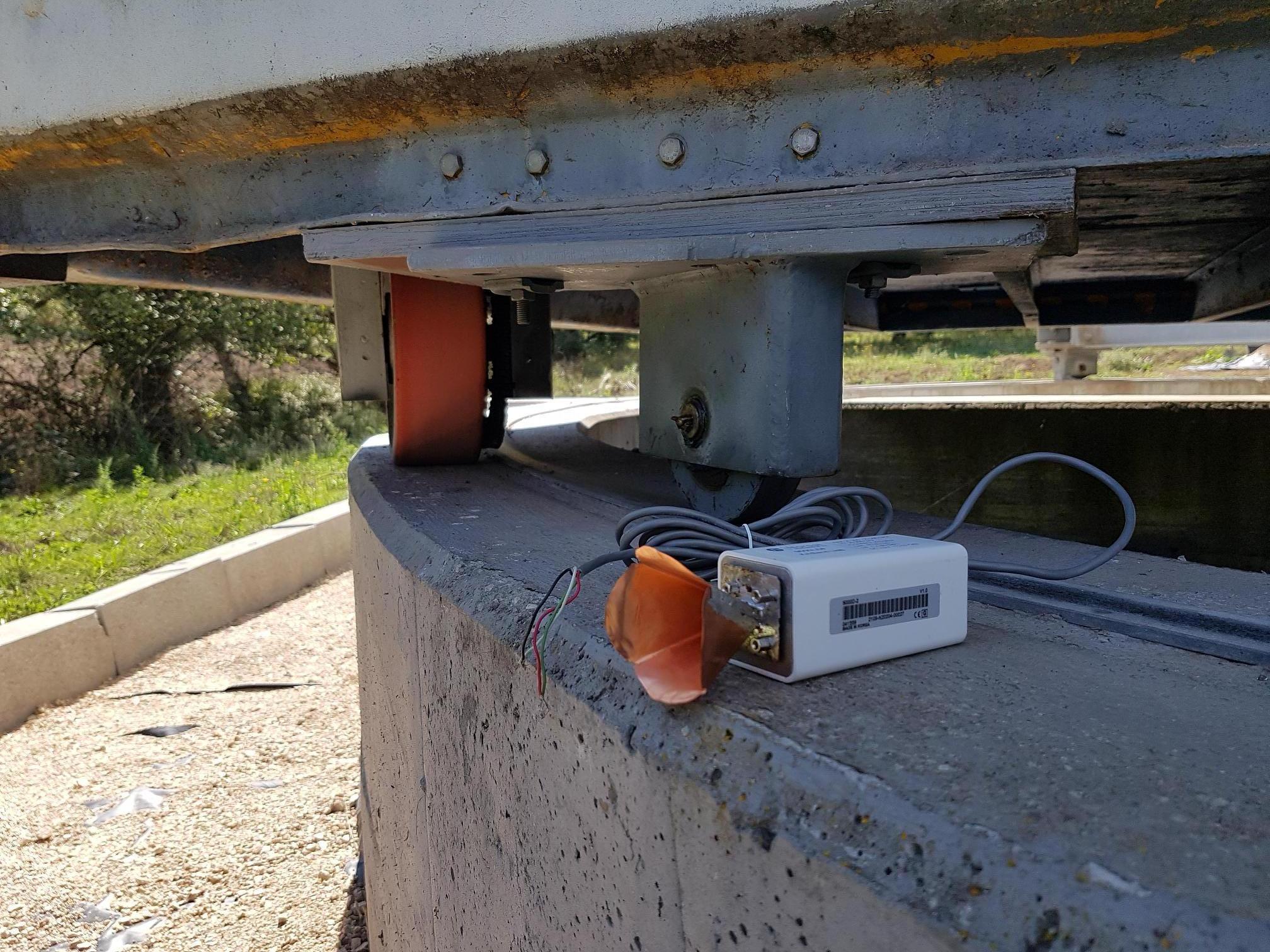
Sao Giao Radio Telescope azimuth drive
A local GPS time server provides the accurate time.
Python scripts for pointing can be found here; here
Results.
W49N is the strongest maser @22Gz. Other results are the capturing of Cep A, Mon R2, Orion-KL, W44, W51, W75 and W3(IRS5).
See the individual pages for the presentation of these sources.
W49N
Cep-A
Mon-R2
Orion-KL
W44
W51
W75
W3-IRS5
Michiel Klaassen November 2022